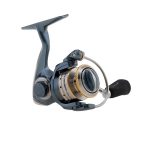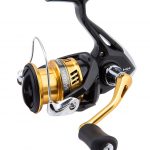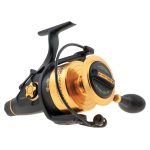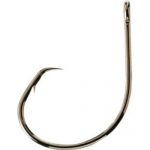There are so many combinations that will work it is almost impossible to list them all. What I will do is talk in general terms about what will work and what I use.
Inshore Fishing Tackle
Rod & Reel Maintenance
NO MATTER WHAT TYPE OF ROD & REEL YOU USE IT MUST BE RINSED WITH FRESHWATER COMPLETELY AFTER EACH USE AND DON’T FORGET TO INCLUDE THE ROD GUIDES.
I personally prefer spinning tackle over casting but that is just me. Any bass tackle will work for much of what you may catch from shore. If you are here for a week and want to fish a couple of times, by all means, bring bass tackle and use it. I can’t emphasize enough that any tackle must be rinsed after each use. The worst that will happen with bass tackle is that you will hook a large redfish or black drum and get spooled. Not a great situation for you and the fish that may encounter the line after it comes free. The odds of this happening are fairly low so I would not worry about it.
Inshore Reel Size
What I have learned is the cheap reels don’t last. The first thing that starts to corrode is the handles. When the finish starts peeling off I toss them so I’ve never looked inside but I can imagine. I own 4 spinning reels that get used regularly in salt water.
Shimano Sonora 4000f with 20# of drag
The Penn reel holds 280 yards of 20# power pro the other three hold around 200 yards each. The largest fish I’ve caught was about 20 pounds and took 100 yards of line twice before tiring.
The Shimano Sonora had begun to show signs of corrosion on the handle after being used for three years. This is the same model that disintegrated two years ago after dozens of trips.
None of the reels are heavy-duty but for kayak fishing, they will work on all but the largest fish.
One of the things which I learned after the fact with the Penn reel is that there is no reverse. That is to say that the anti-reverse is on all the time as there is no lever to turn it off. At first, it bothered me but I got used to it quickly. This is my favorite reel of the three.
Inshore Rods
I use 6’ to 6’6” foot rods in the kayak so that reaching the tip to clear a tip wrap is easy. They are all rated for 8-14 pound test line.
I also have 3 heavier rods for special situations and surfcasting.
10-20 pound line 6’6” used in the kayak on occasion or pier fishing
12-25 pound line 7’ used on the pier
20-30 pound line 10’ surf rod
None of these rods are real expenses all are less than $75. I like Ugly Sticks because they are durable and great value. I have not had an Ugly Stick rusted its guides but other rods that I use to own have rusted. When you rinse your rods after using in saltwater make sure to concentrate on the guides and reel seat this is where rust can start.
Inshore Line Weight
I use Power Pro braid because it works. Its small diameter allows for more line on a given reel. It is abrasion-resistant and easy to work with. There is almost no stretch so it is much more sensitive than mono. There are two negatives with Power Pro. One is it is very visible. The solution is to attach a leader. Either monofilament or fluorocarbon. Mono is cheaper than fluorocarbon but is more visible in the water. The second negative is that it is slippery. Knots tend to pull apart and the spool of the line can spin on the spool. I have found knots that work easily with braid to mono or fluorocarbon. See my section on knots.
The Penn reel has is a rubber bottom on the spool so that braid will not spin on the spool. This makes a direct connection of braid to spool possible.
None of the other reels have this so other techniques must be used. I have tried to twist a heavy rubber band around the spool before putting the line on with limited success. Eventually, all the line starts to spin on the spool, not good when you have a fish on. The standard solution is to attach monofilament backing to the spool first. Since I have found an easy knot to connect braid to mono this is the best solution. I put enough mono on the reel to cover the bottom so that the braid had something to bite into then attach braid.
Inshore Hooks
For live bait, I generally use a 2/0 or 3/0 circle hook. Circle hooks don’t seem to be of uniform sizes so it is best to buy two different types to compare. That said my favorites are the Mustad UltraPoint Demon in-line Circle hook or the Owner’s Mutu Light Circle Hook. Any good quality hook will work. I prefer circle hooks because they almost always hook a fish in the lip. The technique that I use to set the hook is a little different from what you will see on other sites. I have found that if I just reel in the fish I will lose fish that just spit the hook. I start to reel till I feel the fish then I gently set the hook. The hook set doesn’t need to be hard just enough to get the point to penetrate. The initial movement of the hook brings it forward in the fishes mouth so a gut hook is less likely. I think that I hook about 90% of the bites that I get.
Inshore Jigs
I’ve stopped using conventional jigs except in very deep water. Instead, I have switched to weighted hooks. Most of these hooks offer a coil spring on the eye to help secure the swimbait to the hook. This arrangement offers a more natural action for the swimbait.







1 comments
Thank you for the info